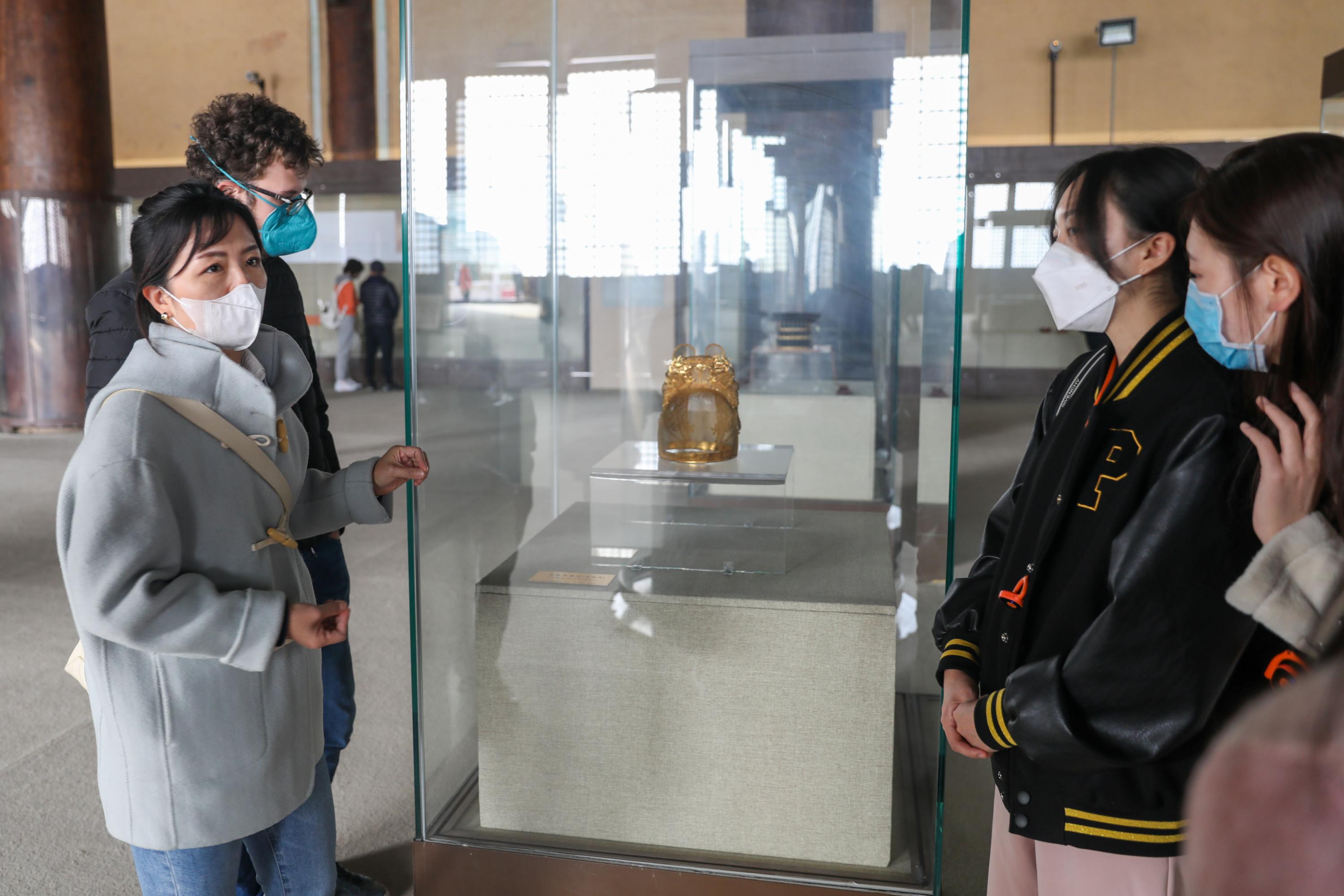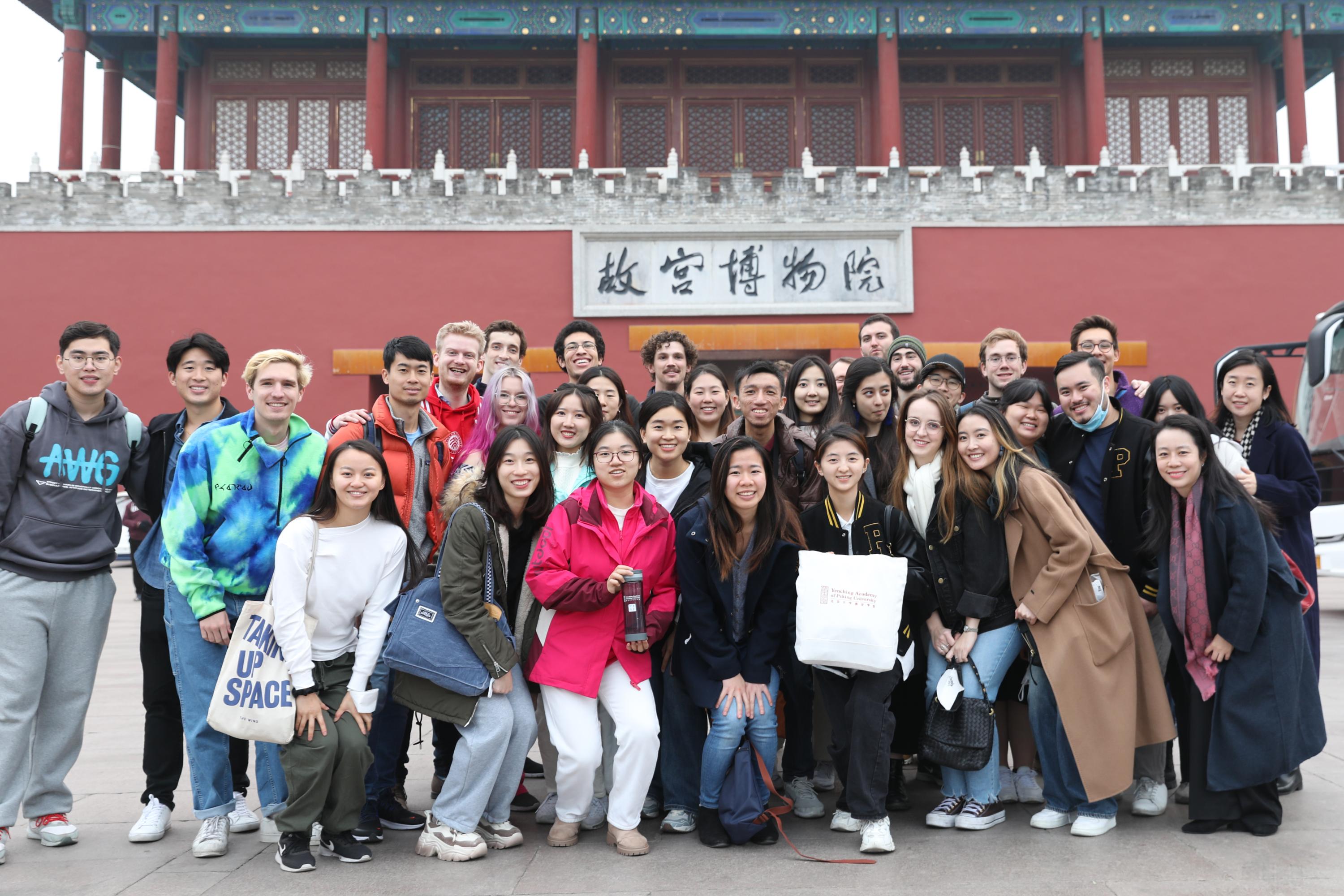Last week, Yenching Academy organized a field study of several sites in Beijing as part of the Academy’s multidisciplinary study and exploration of Chinese society and civilization and China’s place in the rapidly transforming contemporary international system.
We asked five Scholars from the 2022 cohort (Amanda Cassano from the United States, Jiang Bofang from China, Itunu Grace Ishola from Nigeria, Koen Smeets from the Netherlands, and Jeeson Hwang from South Korea) how they felt about the trip last week, and these were their views:
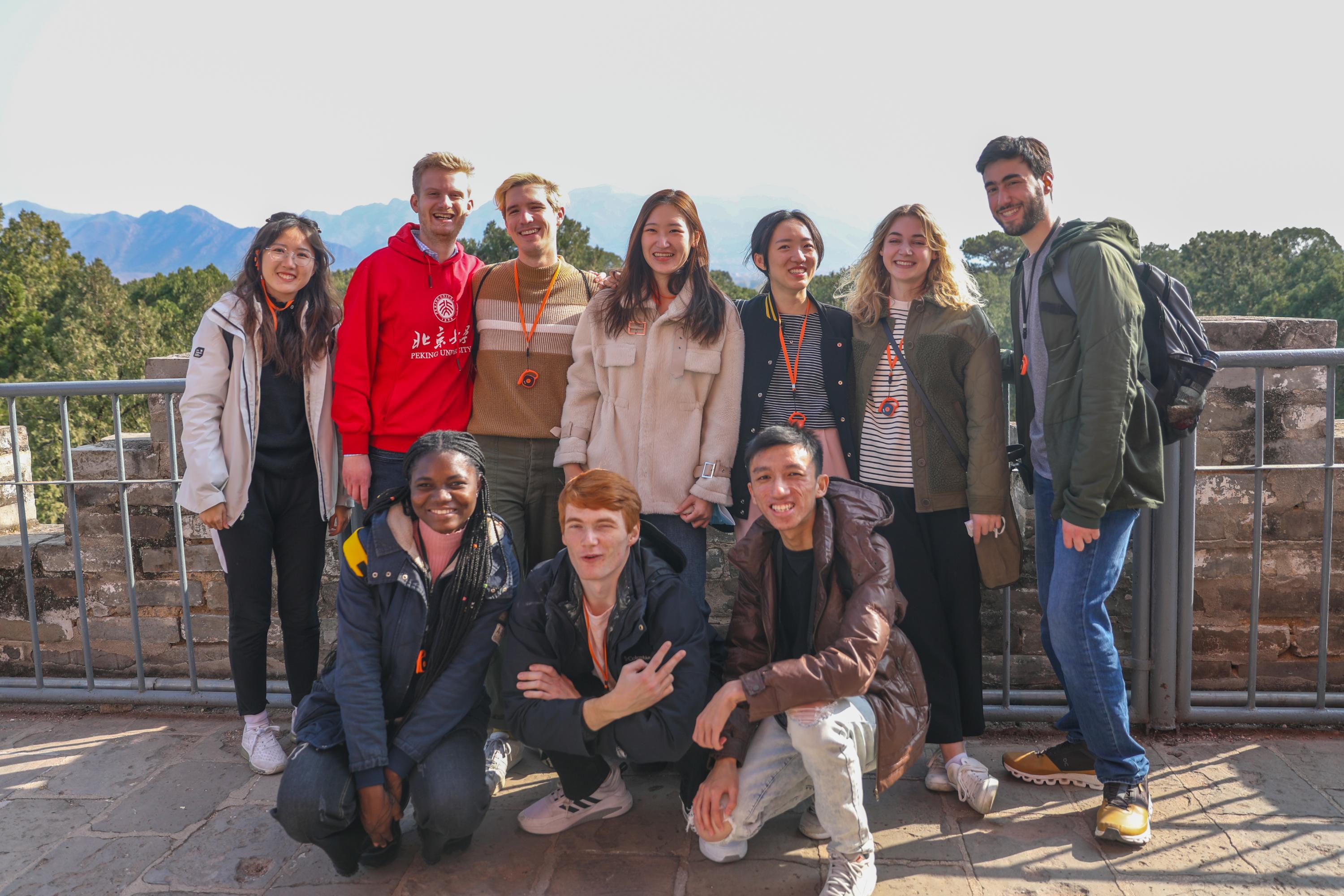
1. What are your thoughts about the trip?
Amanda: While we stood in the Hall of Eminent Favor in Changling, I was amazed by the massive wooden columns. We learned that they are made of very fine wood nanmu (Phoebe zhennan), harvested in the forests of southern provinces. It is difficult to imagine the money and workforce needed to cut, transport, and construct the columns in the Ming dynasty. Considering that the trees must have been hundreds of years old even before they were harvested, and that the original columns remain standing almost half a millennium after the hall was originally built, is truly profound.
Koen: I am immensely grateful I visited several sites in Beijing. The highlight for me was visiting the Forbidden City – when I walked through its giant gates and entered the courtyard, I was awestruck by seeing so much Chinese architecture in bright reds, yellows, and blues in a single place. Experiencing such a historical site, walking over the stone-carved bridges, and seeing the yellow ginkgo trees truly instill in you a far more profound knowledge of Chinese culture, society, and architecture than one can gain from just books and lectures.
Grace: I visited the Ming Tomb, the Ancient Architectures Museum, and the Palace of Heaven. One thing stood out in all of these sites: the state of Chinese culture; from ancient times till date. The Ancient Architecture Museum gave an idea of China’s long-standing architectural history and technologies. The Palace of Heaven and the Ming Tombs explain the thoughts and the spirituality of Chinese people in Ancient China. The stone tablets on the Soul Tower before the grave sites of the Ming emperors stood out for me during the visit to the Ming Tombs. The Chinese characters on those tablets are close to the simplified characters in use today. Also, they were one of the real artifacts on display throughout the trips; some other places only exhibited replicas of the ancient artifacts. Those stone tablets were my favorite. Just as the Stones served the purpose of connecting the Ming emperor to the underworld, the characters on those tablets also connect China’s ancient civilization to the present world.

2. How do the trips align with your interests in China Studies?
Jeeson: I gained more appreciation for China’s cultural and historical artifacts through these field trips. While my interests are more grounded in present-day matters of China’s policies and foreign affairs, the historical and cultural context which came alive during the site visits provided a context that will help me in my future studies.
Amanda: As a member of the International Relations and Politics track, I am interested in understanding China’s evolving cross-country relationships. Visiting these historical sites reminded me of how China has been a cultural trendsetter and a recipient of cultural exchanges throughout its history. Perhaps, the most prominent example was in the pagoda models we saw at the Beijing Architectural Museum, which reflect a blend of Indian stupa structure and indigenous design.
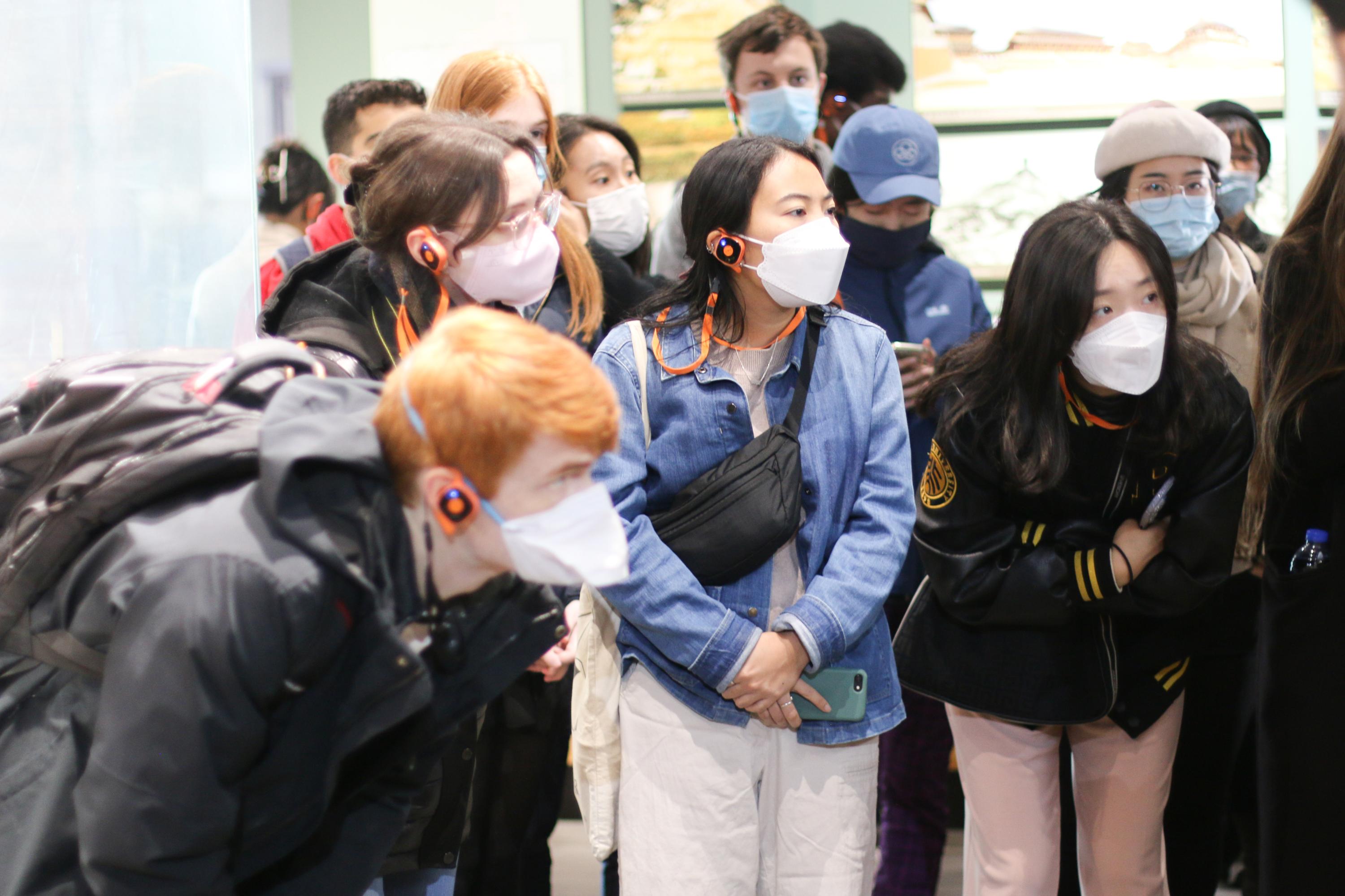
3. In what ways do the trips add to your China experience and exploration/appreciation of Chinese history?
Amanda: My interest in pursuing China Studies began when I took Chinese history classes at my undergraduate institution four years ago. Visiting the Ming tombs and the Temple of Heaven brought back the sense of wonder and excitement I first felt when I began learning about the dynasties which sponsored and built these sites. There is a Chinese saying “读万卷书不如行万里路 .” Essentially, it translates as “reading a thousand books is not worth traveling a thousand miles.” I hope that through experiential learning opportunities like the ones we enjoyed this week, we can open our eyes to understanding China in a new light.
Jeeson: Being able to visit the sites in person was an exciting experience. Reading about a place and visiting it in person are two different things. More so, hearing the explanations about the sites and artifacts in person added to the appreciation of Chinese history and culture I had hoped to cultivate during my time in China.
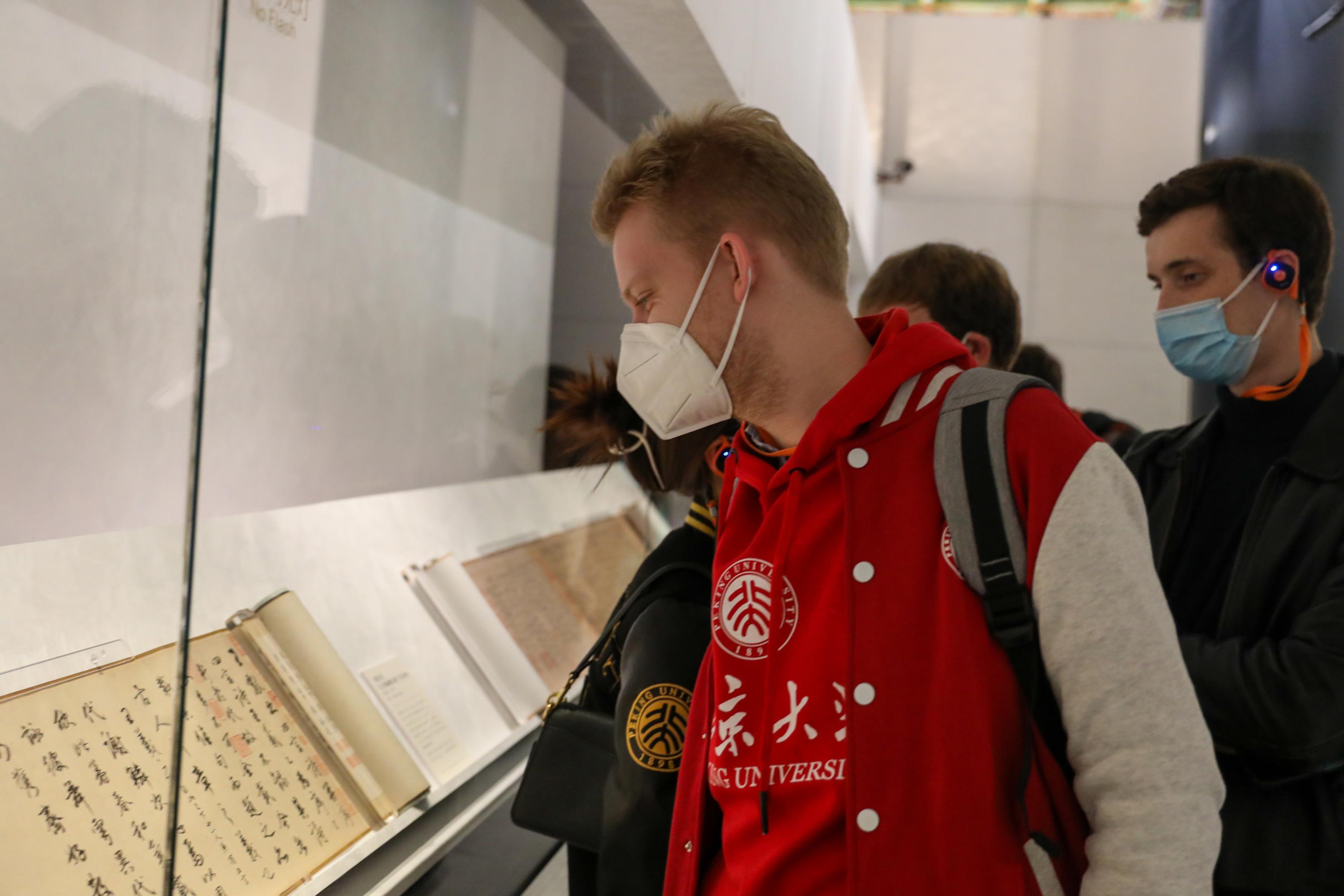
4. Did you, at any point during the trip, see something that made you think of a historic site, artifact, or monument in your home country? If yes, can you describe this thought process?
Jeeson: A few of the stone figures on the Spirit Way reminded me of stone figures in Korean palaces called Haetae. The Haetae is a mythical creature with scales and the head of a lion that passes judgement on guilty parties. The Haetae also is believed to guard against natural disasters. A similar creature in Chinese mythology called Xiezhi also exists. I am unsure if its mythological significance is the same as that of the Haetae, but the fact that the stone figures were acting as guardians reminded me of these stone figures.
Grace: The tour of the Ancient Architectures Museum made me think of the Benin Empire. The meticulous planning of the city, the drainage system, and the building equipment, among other aspects, brought the picture of the Benin Empire before it was invaded in the 19th century. The images of ancient architecture in a well-structured community came to mind. Unfortunately, many of the structures and artifacts are no more, or are housed in museums outside Nigeria. Likewise, Professor Lu Yang gave a lecture about the burial rituals at the Ming Tombs on how the emperors’ concubines, slaves, and some other people had to be buried with the emperors and how this ritual practice was abolished. Records exist of a similar practice and its abolition in ancient Yoruba history (an ethnic group in Nigeria). I found myself pondering how come both societies share some similar beliefs and practices in their histories, especially considering how far apart both countries are situated.
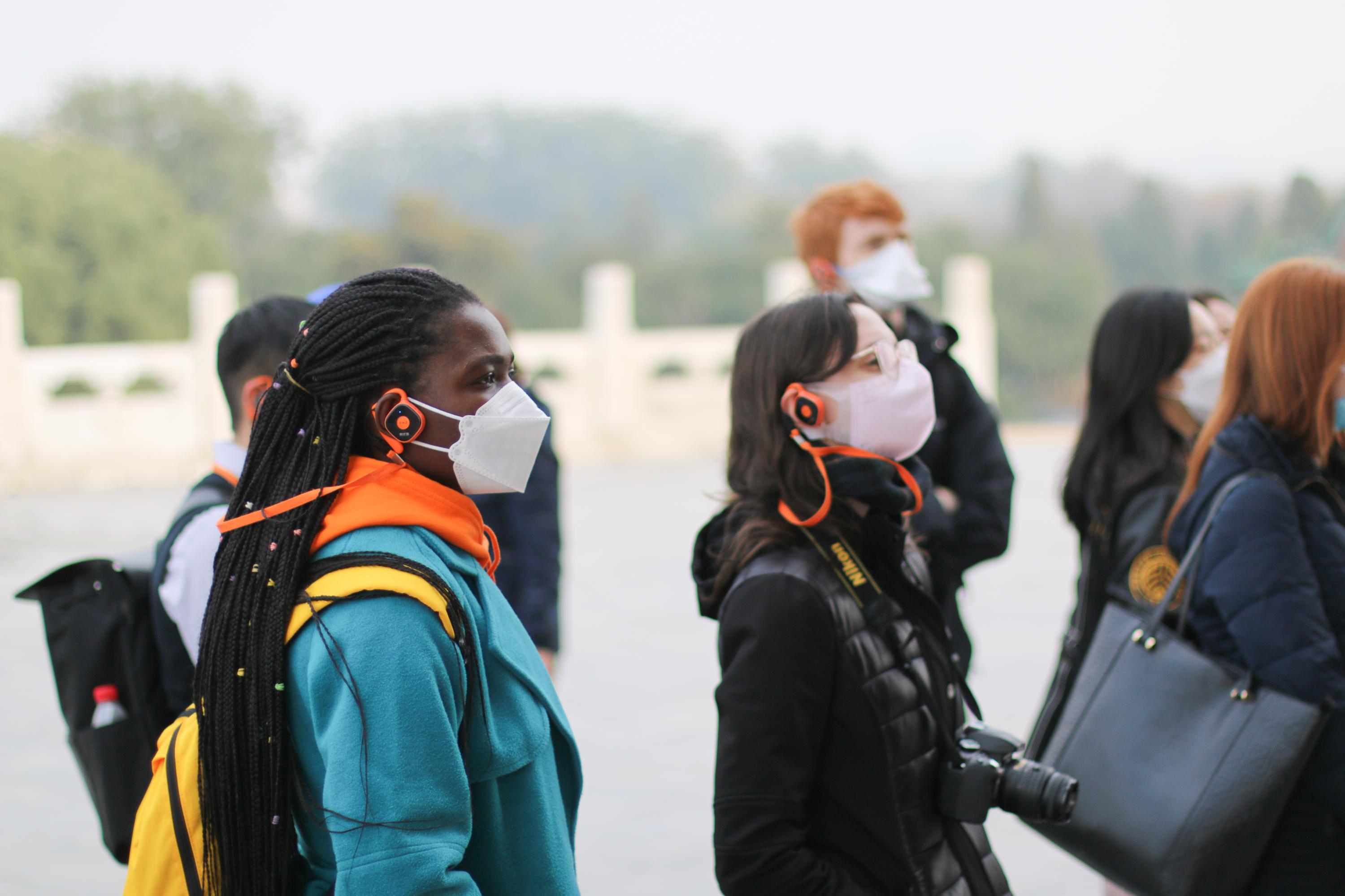
Bofang: The Ming Tombs was a great experience. We had a fantastic tour guide to discuss Chinese history and culture, and we were chanced to explore the tombs! We visited three tombs in total. It was interesting to hear about how different tombs belonging to various historical figures and times were modified by the emperors and how the size of some tombs represents the life struggles, power shifts, and power competitions within the governing imperial palace. The Ming tomb in Beijing reminded me of another Ming tomb in Nanjing, which belonged to the first emperor of the Ming Dynasty. It also reminded me how different places in China are connected regarding the country’s rich and long history.
Koen: Yes, the Chinese porcelains at the Forbidden City! The porcelain in The Netherlands has been strongly inspired by the styles, colors, and designs of Chinese blue-white porcelains. The subjects on the porcelains are similar, such as flowers, families, and houses. We still produce such porcelains to this day – you might be familiar with the blue-white porcelain houses that KLM gives you when you fly business class.

5. What is your biggest takeaway from the week’s activities?
Koen: My biggest takeaway was the importance of visiting China as a Scholar in China Studies. There are some things you simply cannot learn through a lecture, textbook, or talk, but you have to experience yourself – the Ming Tombs and the Forbidden City are definitely among those. I cannot recommend highly enough for all scholars of Chinese Studies to visit sites such as these.
Grace: An understanding of Chinese Feng Shui, Ancient Chinese spirituality (Daoism and Buddhism), and the knowledge and differentiation of ancient Chinese architecture. I am much more aware of what the numbers of animals on the roof of Chinese buildings represent, the styles of the roof, and how the styles depict the status of the buildings and their owners.
Jeeson: In addition to visiting the historical sites, I was able to meet and talk to many of my fellow Scholars. Covid restrictions have prevented many Scholars from coming to campus earlier in the semester, and the field trips gave me the opportunity to speak with some of the friends I had not been able to engage with previously on a closer level.
Amanda: I am most impressed by historians’ efforts to preserve and maintain these structures. The fact that some of Beijing’s oldest tombs and temples not only remain standing today but are in exceptional condition is a credit to the scholars who have devoted themselves to studying and preserving these structures for future generations.
